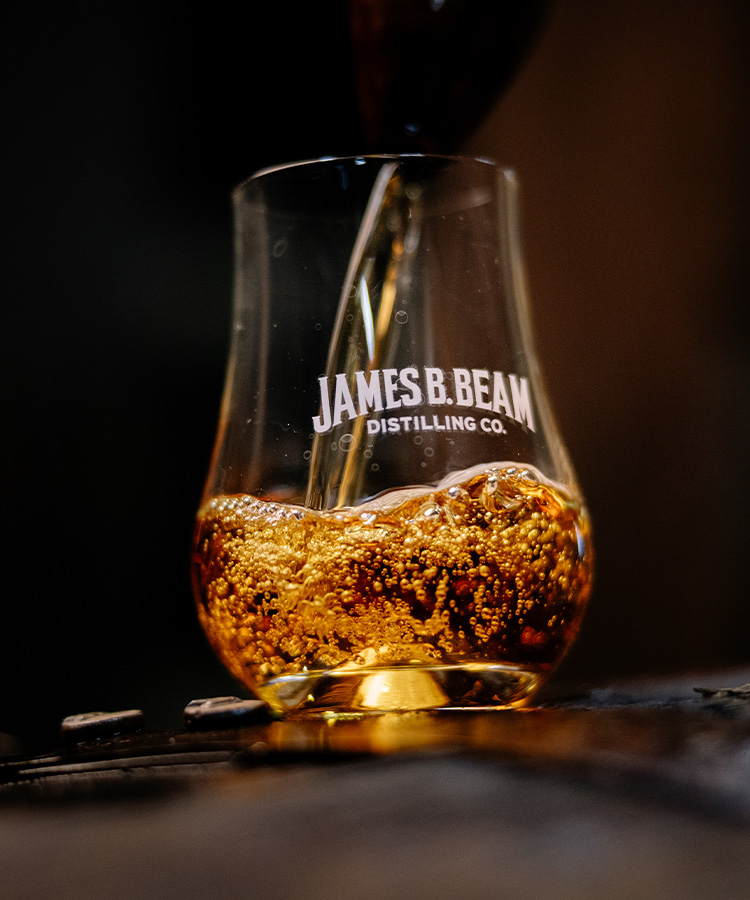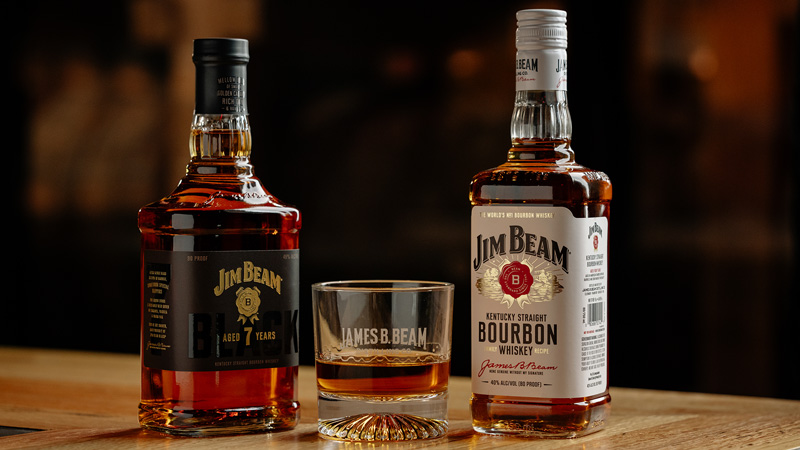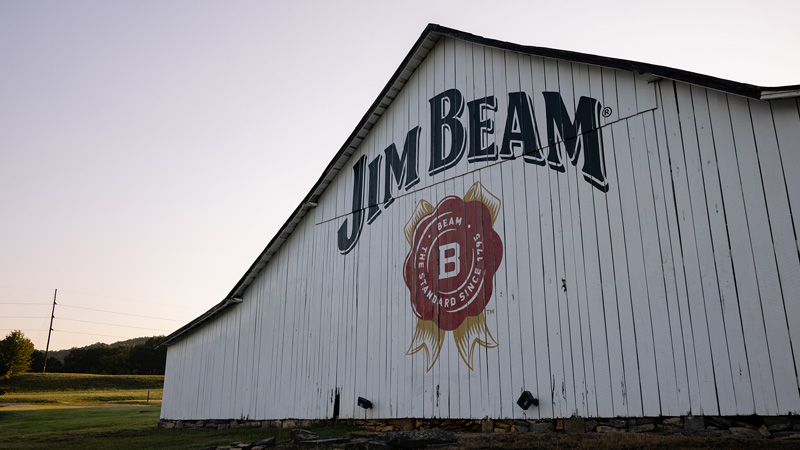
The James B. Beam Distilling Co. has a storied history as home to the first family of bourbon and is home to the world’s No. 1 bourbon, Jim Beam®. Even though their Clermont homeplace in Kentucky just celebrated 90 years of distilling this summer, the origins of this legendary brand go back over 225 years to when the family started crafting whiskey in 1795. Today, their portfolio of iconic American whiskeys encompasses a wide range from heritage brands such as Old Grand-Dad® and Old Overholt® to small batch offerings like Booker’s®, Baker’s®, and Little Book®.
With eight continuous generations of distillers, it’s no surprise the Beam family holds the title of the first family of bourbon. Tim Heuisler, global small batch brand ambassador, shares how the father and son master distillers lead the distillery teams together: “We are very fortunate to have both Fred and Freddie operating at the same time right now. Fred brings decades of experience to the table having learned from his father, Booker Noe, and Freddie really has a future-facing approach when it comes to innovation and the next generation of our brands.”
It all began with Jacob Beam, who moved his family to the foothills of Kentucky before it was even established as a state. Jacob had been distilling since the 1780s, but didn’t start selling his bourbon until 1795. His son, David Beam, was the next to take on the reins of the family business at just 18 years old. David, not afraid of the changing landscape of technology and transportation, is credited with expanding the distillery and helping to increase its production capacity from the 1830s to the 1840s.
David M. Beam, third-generation distiller, led the business through an uncertain time of war and moved the distillery to Nelson County, which was a very strategic step because it was near the railroad lines. Not only did this allow for reliable shipping, but it also paved the way for national reach with access to trade routes that took their whiskeys farther north and south than ever before.
The torch was then passed from David M. to his son, James B. Beam, famously known as Jim Beam. In 1933, after the end of Prohibition, Jim rebuilt the family business at the age of 70 and recreated the family’s signature yeast, which is still used to make their bourbons today.
T. Jeremiah “Jere” Beam, fifth-generation distiller, constructed a new distillery in Bullitt County, Ky. Jere also helped to raise awareness of the Beam family name overseas with a significant presence in Europe. Jere mentored his nephew, Frederick “Booker” Noe II, to be the first Beam master distiller with the last name Noe.
Booker is known as the family visionary who always looked forward while experimenting with distillation and rackhouse placements. His small- batch innovations led to the creation of the brands including Basil Hayden, Knob Creek, Booker’s, and Baker’s.
Booker’s son Frederick “Fred” Booker Noe III, current master distiller of the James B. Beam Distilling Co., brought Knob Creek to a global stage. As an addition to the bourbon portfolio, Fred created Legent in a historic collaboration with Shinji Fukuyo, chief blender of Suntory in Japan. He also helped Jim Beam Black achieve IWSC gold medal status and elevated the Kentucky Bourbon Trail hospitality efforts with improvements to the Clermont campus complete with a flagship restaurant, The Kitchen Table.
Fred’s son Frederick “Freddie” Booker Noe IV is an eighth-generation master distiller. Freddie’s first project was Little Book, which is also the nickname his grandfather Booker gave to him. Little Book has received national acclaim with each new release and has become a popular bottle among aficionados.
A major part of the James B. Beam Distilling Co. heritage is its bucolic location, in the heart of a state where corn, the main ingredient for mashing and distilling bourbon, thrives. Situated near a large nature reserve in Clermont, Ky., the land is the perfect home to produce quality bourbon with the best local ingredients. Take, for example, their heirloom yeast strain from 1933. “We have been propagating the same yeast strain that Jim Beam himself used right after Prohibition,” Heuisler notes. “There are few distilleries still utilizing jug yeast and we take a lot of pride in the work that goes into it. It is one of the largest drivers of the flavors you’ll find in our whiskeys.” This yeast is also used in the dough for the pizza that is made at their restaurant, The Kitchen Table.
In addition, the climate of Clermont is ideal for aging whiskey. The harsh winters in contrast with scorching summers means the liquid has ample opportunity to mature in the barrels, giving the bourbon an abundance of character and rich flavor.
Exceptional bourbon can only be made with an exceptionally clean water source. The water in Kentucky, which is located on a natural limestone shelf, is essential to consistently producing the best-quality whiskeys. “There’s a reason that the best bourbon comes from Kentucky, and our naturally filtered limestone water plays a big part in that,” says Heuisler. “This water is low in iron and rich in calcium, which, when utilized during our cooking and mashing processes, produces great-tasting whiskey.” The water also has a high pH value, which helps with fermentation.
A rich legacy spanning 229 years of bourbon making along with an heirloom yeast strain that dates back to 1933, and limestone filtered water are key components that contribute to making some of the best bourbons on Earth for generations to come.
This article is sponsored by the James B. Beam Distilling Co.


